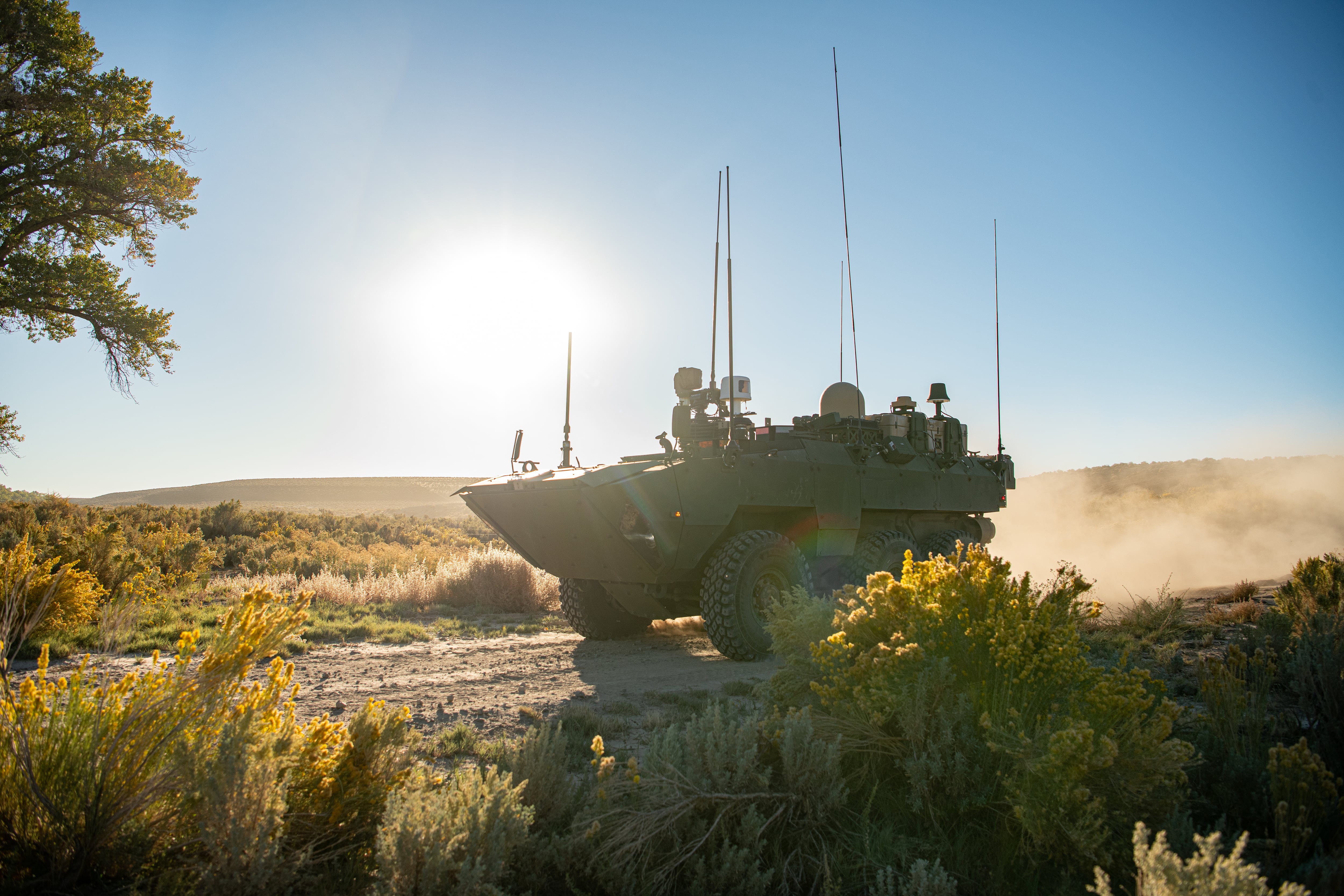The Marine Corps has kicked off its evaluations of the advanced reconnaissance vehicle prototypes that are competing to replace the aging light armored vehicle.
The ARV is supposed to be agile on both land and water, and adept at sensing threats and conveying that information across networks.
The prototypes were designed with an eye toward reconnaissance and counter-reconnaissance — two of the main components of Force Design 2030, the Corps’ modernization initiative. Force Design 2030 is particularly focused on adapting to the rise of precision-strike capabilities, which, Corps officials say, make it imperative for Marines to be able to track opposing forces and avoid being tracked themselves.
RELATED

The vehicle will be equipped with command, control, communications, computer and unmanned aerial system (C4/UAS) capabilities, according to a Marine Systems Command news release Thursday.
Thanks to unmanned aircraft that can gather data from the air, the ARV would be able to cover more ground in conducting reconnaissance than its predecessor. And, because of the more advanced communications system, it is supposed to be far better at sharing the information it collects across the battlefield. That capability has led the companies building the prototypes to compare the vehicle’s role to that of a quarterback on a football field.
Textron and General Dynamics Land Systems in December submitted their ARV prototypes, designed specifically to replace the LAV. The Marine Corps selected the two companies for a prototype contract in 2021.
The solution put forward by a third competitor, BAE Systems, involves integrating C4/UAS onto the amphibious combat vehicle, which is already in service in the Corps.
Testing of the prototypes began in early January, said Marine Corps spokesman Manny Pacheco. This evaluation stage will conclude in the third quarter of 2023, according to the SYSCOM release.
The Marine Corps will test how the prototypes move over complex terrain, stress their C4/UAS capabilities and evaluate other aspects of performance, the SYSCOM release stated.
Production of the ARV could cost an estimated $1.8 billion to $6.8 billion over five years, according to the Congressional Research Service.
The Marine Corps has used the LAV since the 1980s and is scheduled to retire them by the 2030s, by which time the ARV is supposed to be in service.
The Marine Corps said in 2020 that it had assessed how the LAV would perform against a near-peer adversary and found it fell short. In recent years, the LAV has also been the most prone to accidents of the Marine Corps’ tactical vehicles, a July 2021 Government Accountability Office report found.
Irene Loewenson is a staff reporter for Marine Corps Times. She joined Military Times as an editorial fellow in August 2022. She is a graduate of Williams College, where she was the editor-in-chief of the student newspaper.








